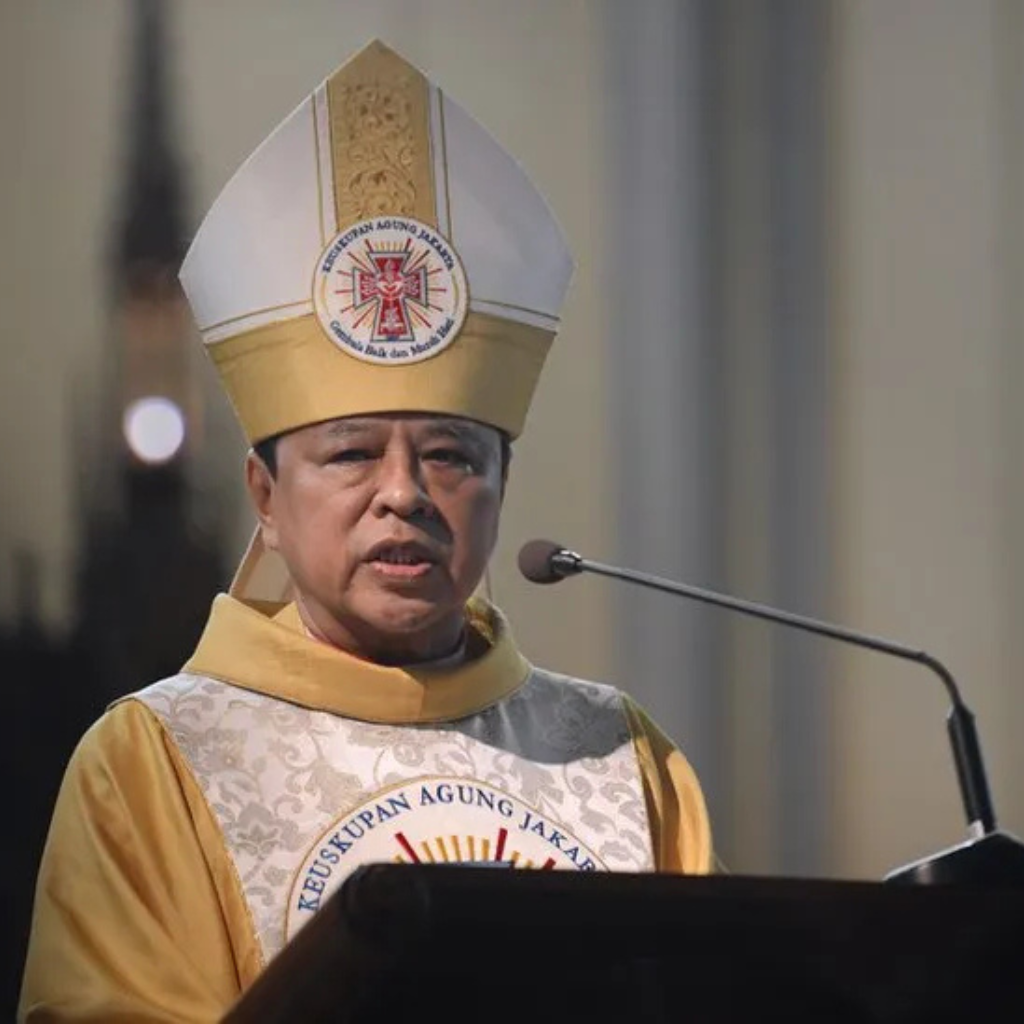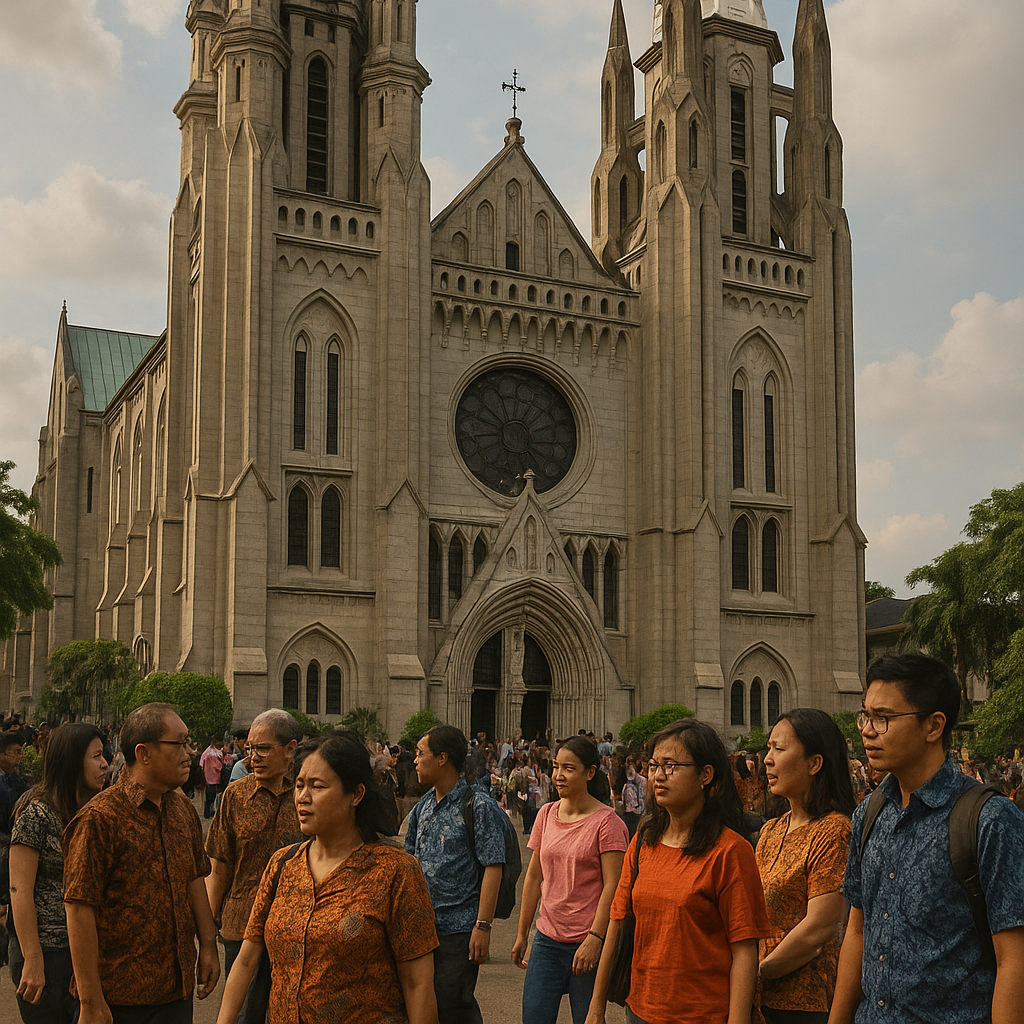Albertus Soegijapranata, the First Indonesian Native to Become Archbishop
theolingua.id – Indonesia has a series of famous figures in the past who fought for the nation in various fields. One of them is Albertus Soegijapranata, a Catholic figure who has an important role in Indonesian history. He was active in various important events, starting from the end of the Dutch colonial period, the Japanese occupation, to the beginning of Indonesian independence. His work in fighting for national and religious values has made him remembered as an influential figure in the development of the Catholic Church in the country.
Albertus Soegijapranata is known as the first native to be appointed Archbishop in Indonesia. As a spiritual leader, he not only built a stronger Catholic community, but also fought for the integration of faith and nationalism. His concept, ‘100% Catholic, 100% Indonesian,’ reflects that religious identity and love for the country can go hand in hand. It is this principle that makes him one of the most respected Catholic figures in Indonesian history.
Profile of Albertus Soegijapranata
Albertus Soegijapranata was born in Surakarta on 25 November 1896 to a family of palace servants of the Surakarta Sultanate. Although born into a Muslim family, his life journey led him to Catholic teachings. His grandfather, Soepa, was known as a Kiai (Muslim cleric), while his father became a servant of Sri Sultan Hamengkubuwono VII after they moved to Yogyakarta.
Since childhood, Soegija was known as an intelligent child. He was educated at the Loro Number School in the Keraton neighbourhood and attracted the attention of the Jesuit priest, Fr. Frans van Lith. In 1909, Soegija joined the Xaverius College in Muntilan, a boarding school for prospective teachers founded by Father Van Lith. This school, although Catholic-based, was open to all natives to reduce the illiteracy rate.
The Journey to Catholicism
While studying at Xaverius College, Soegija became interested in Catholic teachings. The school environment, which was dominated by Catholic teachings and values, made him want to understand more about the religion. In 1910, he asked his parents for permission to study the Catholic religion. However, his request was rejected because of his family’s background of adhering to ancestral traditions.
Despite the rejection, Soegija’s enthusiasm for studying Catholicism did not fade. He continued to show interest and finally obtained permission from the school to study religion. His sincerity and perseverance in exploring his faith eventually led him to a major decision in his life. On 24 December 1910, Soegija received the sacrament of baptism with the name Albertus, which later became an important part of his identity throughout his life.
Becoming a Catholic Priest
After completing his education at the Xaverius College in 1915, Soegija decided to become a priest. In 1916, he was sent to the Gymnasium in Uden, the Netherlands, to deepen his Catholic teachings. There, he studied Latin, Greek, and philosophy under the guidance of the Order of Sanctae Crucis (OSC). Then, he continued his theological studies in Maastricht, Limburg, and in 1931, he was ordained a priest by the Bishop of Roermond.
After receiving the sacrament of the priesthood, he added the word ‘pranata’ to his name, thus becoming known as Soegijapranata. Two years later, he returned to Indonesia and was assigned as an Assistant Priest in Bintaran before eventually becoming a Parish Priest.
Becoming the First Indigenous Bishop in Indonesia
In 1940, Soegijapranata was appointed leader of the Apostolic Vicariate by telegram from Cardinal Giovanni Battista Montini. The Apostolic Vicariate was the authority of the Catholic Church in areas that did not yet have a diocese. At that time, there was only one Apostolic Vicariate in Batavia, led by Mgr. Petrus Wilekens.
Because the number of Catholics continued to grow, Mgr. Petrus proposed the formation of a new Apostolic Vicariate. Soegijapranata was appointed Titular Bishop of Danaba. When he received the telegram, he couldn’t believe it and cried. However, he accepted the assignment.
On 30 September 1940, Soegijapranata left for Semarang and on 6 October 1940, he was consecrated by Mgr. Wilekens at the Holy Rosary Church of Randusari. With this ordination, he officially became the first indigenous bishop in Indonesia.
Conclusion
Albertus Soegijapranata was a figure who played a major role in the development of the Catholic Church in Indonesia. As the first indigenous bishop, he not only contributed to building a strong Catholic community, but also became an important figure in the struggle for nationalism. The concept he promoted, ‘100% Catholic, 100% Indonesian,’ illustrates the spirit that religious identity and love for the country can go hand in hand without conflicting.
Throughout his life, Soegijapranata showed great dedication in connecting religious values with nationality. He was active in various social and political activities aimed at fighting for justice and unity in a pluralistic society. His legacy is still remembered today as a symbol of diversity and national spirit in Indonesia, inspiring many people to uphold the values of tolerance and patriotism.








